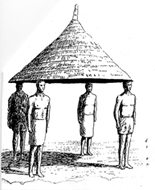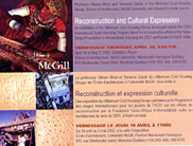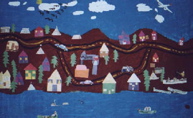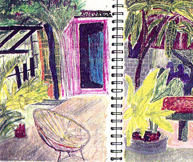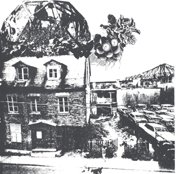This section provides information about past MCHG's research, training, and publications activities. We present a short description of each project, and in most of the publications, we include the complete document.
Should you have any problems with broken links, please email: minimumcosthousinggroup [at] gmail.com
North American Sustainability, Housing and Community Consortium (NASHCC)
2004 Program for North American Mobility in Higher Education
Minimum Cost Housing Group, 2004-2009
McGill School of Architecture and Dalhousie Faculty of Architecture and Planning were partners in an architectural project/exchange involving two schools of architecture in Mexico (Monterrey and UNAM) and two in the USA (Ball State University and University of Texas at Austin). The Federal Government program is funded in Canada by the Human Resources and Skills Development Canada (HRSDC).
North American Sustainability, Housing and Community Consortium (NASHCC) (HRDC) supported continental exchange program in architecture to expose students from Mexico, the US, and Canada to urgent problems of urban housing and sustainable development in North American cities; students were engaged in hands-on design and problem-solving situations that demanded community-based multi-disciplinary and multi-cultural professional skills, in order to help create borderless working space and professionals.
Making the Edible Landscape
A Global Three-City Project
Minimum Cost Housing Group, 2004-2007
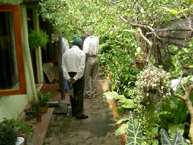
Making the Edible Landscape was a three-year collaborative research, design and construction project, that demonstrated the value of urban agriculture (UA) as a permanent feature in city planning and housing design. It also addressed the Millennium Development Goals of the United Nations, focusing on poverty alleviation and food security, the provision of quality food, development of healthy and sustainable environments, improved housing, gender equity, youth engagement, and employment. With support from International Development Research Centre (IDRC), McGill University, and the Urban Management Program of the United Nations Human Settlements Program (UN-HABITAT) coordinated research in three cities: Colombo, Sri Lanka; Kampala, Uganda; and Rosario, Argentina. The project was also supported by the ETC-Urban Agriculture Unit in the Netherlands, partner in the international network of Resource centres on Urban Agriculture and Food Security (RUAF).
IDRC is a public corporation created by the Government of Canada to help developing country cities find solutions to social, economic and environmental problems through applied research. And ETC-Urban Agriculture Unit is part of ETC-Foundation, an international and not-for-profit advisory organisation whose objective is to encourage and supports development initiatives of local partners towards sustainable development and equity in terms of access to resources, benefits and decision making processes.
Edible Landscape Publication
Making the Edible Landscape: A Study of Urban Agriculture in Montreal
Editors: Vikram Bhatt and Rune Kongshaug, MCHG, 2005

This report is about alternative use of urban land, and in particular its use for food production in Montreal. People grow food or raise animals in cities for nourishment, extra income, or for the sheer joy of it. Urban gardens exist in distinct physical and organizational forms, and occur for various reasons. Research on the subject refers to all these phenomena as Urban Agriculture.
This publication was in part made possible with the aid of a grant from the International Development Research Centre's Cities Feeding Program, Ottawa, Canada.
Reconstruction and Cultural Expression
The Region of Kutch, India
Minimum Cost Housing Group, 2001 - 2005
For eight months, we partnered with long time colleagues at the Vastu-Shilpa Foundation in Ahmedabad, India, when a devastating earthquake shook the region of Kutch in January 2001. We redirected our energies to address the then immediate problems of rebuilding and resettlement in the region after the dust had settled and the rubble was being sorted out and sifted through. The record of the destruction and reconstruction process that was maintained by our researches is presented in this report.
Post-occupancy study of Aranya Project
An Architecture for the Developing World
Minimum Cost Housing Group, 2001 - 2005
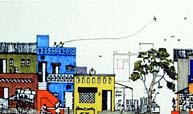
Traditionally, architects have contributed little to housing for the Third World urban poor. Those who opt to work for the poor need to rethink their roles; the numbers are overwhelming, the issues complex, and resources very limited. One solution is to use land as a resource to produce housing for the poor, by allowing them access to it to build their homes. A study was conducted of such initiatives, in particular, a case in India: the Aranya Township completed in 1988 and considered a model project. To help determine the project's success, we analyzed the consolidation of homes, the use of open spaces and compared the appropriateness of design to occupants' lifestyles, using video, photographs and drawings.
L'habitat Autochtone et le Genre
Une approche sensible de la population Crie de Chisasibi
Minimum Cost Housing Group, 2000- 2001
Traditionally, Native Women endorsed large responsibilities within both the domestic and the public realms. Following the European conquest of Canada, the social status of Native women has changed; slowly they became subordinated to men, a status not very different from that of the non-Native Canadian women of that time. Nevertheless, Native women remain the caretakers of the households, guardians of the traditions and mothers; they represent the center of the family. The research project is based on 2 parallel approaches: the first research looks at women's opinion concerning their dwelling, as well from the physical point of view, functionality and appropriateness to people's needs, than from the resident's expectations. The second part of the research focuses on people's traditional experiences, their cultural background, their life style in the bush as children, their references as native people before they were confronted to North American life style.
Traditionnellement, les femmes autochtones et les femmes cries en particulier occupaient un rôle important dans la vie de leurs communautés. Suite à la conquête Européenne du Canada, les femmes autochtones ont perdu leur statut et ne sont plus consultées lors de la planification de leurs maisons. Malgré tout, les femmes autochtones demeurent encore responsables des tâches domestiques mais aussi de l'éducation des enfants et du maintien de l'identité culturelle de leurs communautés. La première partie de l'étude s'intéresse à l'opinion des femmes concernant les aspects physiques et fonctionnels de leur logement. La seconde partie de l'étude considère les expériences de vie traditionnelle des résidents avant qu'ils aient été intégrés dans un mode de vie nord américain.
Fingers of Hope (Los dedos de la esperanza)
Upgrading Proposal for La Esperanza, Zihuatanejo, Mexico
Minimum Cost Housing Group, 1995 and 1996
The Minimum Cost Housing Group of McGill University collaborated with the municipal government of Zihuatanejo by developing upgrading proposals, which are meant to be part of a broadened, or holistic, urban upgrading undertaking. The proposals for upgrading contained in this report are the result of studies carried out from Sept 1995 to April 1996.
Urban Upgrading
Upgrading Proposal for La Esperanza, Zihuatanejo, Mexico
Minimum Cost Housing Group, 1995 and 1996
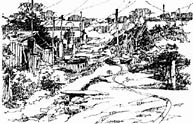
The Minimum Cost Housing Group of McGill University collaborated with the municipal government of Zihuatanejo by developing upgrading proposals, which are meant to be part of a broadened, or holistic, urban upgrading undertaking. The proposals for upgrading contained in this report are the result of studies carried out from September 1995 to April 1996.
Housing a Billion
Design Ideas for Rural China and Village Upgrading
Minimum Cost Housing Group, 1993 - 1995
As a part of this national effort, Chongqing Institute of Architecture and Engineering initiated a collaborative project with the Minimum Cost Housing Group, McGill University, Montreal. The aim of the Chongqing-McGill collaboration was to train the Chongqing staff, to explore new land use, efficient planning and housing solutions for rural areas, and to produce a demonstration housing project for Fangtin, a prosperous market town located in the centre of the Sichuan Basin. Problems inherent in formal approaches were analysed and an alternative developmental approach – Village Upgrading – was presented as a more viable and sensitive way to address the housing problems of farmers, and one that was more likely to promote rural development in its widest sense.
How the Other Half Builds
Vol. 1: Space, Vol. 2: Plots, and Vol. 3: The Self-Selection Process
Minimum Cost Housing Group, 1984-1990

Volume 1: Space.
This study is the result of site surveys carried out in June 1984 in several slums in the city of Indore. The physical survey involved daily visits to these settlements, the preparation of measured drawings of selected locations, accompanied by observational notes and, in most cases, photographs. The first volume is part of an on-going project that is studying the physical performance of informal housing in less-developed countries. This study includes spatial requirements, low-cost construction materials, and non-conventional servicing and infrastructure technologies.
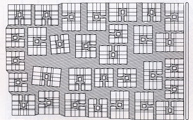
Volume 2: Plots.
The second volume tries to understand how and why plots acquire certain physical characteristics. This study uses a quantitative approach borrowing the statistical tools of the social scientists.

Volume 3: The Self-Selection Process. Based on the findings reported in the first two volumes a design simulation exercise was carried out. The simulation process and results of it are described in the third volume.
Rooftop Wastelands
Community centre rooftop in downtown Montreal
Minimum Cost Housing Group, October 1976
This report is based on two years of work on rooftop gardens which comprised a federally-funded demostration project, supported by the Department of Supply and Services. The main activity of the Rooftop Wastelands project was centred on a community centre rooftop in downtown Montreal. This 1000 square meter roof was developed as a community garden intended to serve as both a demonstration of rooftop potential as web as a living classroom for the organic gardening course that formed an important part of the activities.
